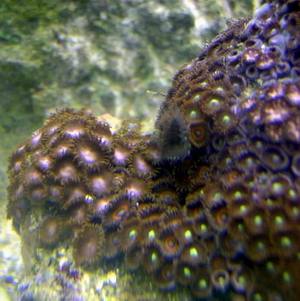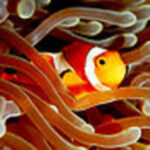Corals are not only a beautiful addition to any saltwater aquarium, but they can also become an expensive hobby – and even addiction as many hobbyists will find out to some extent, sooner or later. A coral enthusiast will spend hundred and upwards to a few thousand dollars stocking their reef tank. Fragging or assisting the corals to split or reproduce is a good way to ensure that you keep those most loved or expensive corals around for years to come. Fragging a rare coral that is established and acclimated is a good idea in case something unforeseen happens to the original colony everything will not be lost. I used to be afraid of fragging my corals, but after losing several beautiful Ricordea mushrooms (including a rare hot pink one that cost me $60 for 1 mushroom). Now I frag almost all of my corals, and have filled up my second saltwater reef tank with the frags from the first. I just wish someone would have told me these things when I started, but at least now I can share my knowledge with you.
Fragging is a simple process requiring little more than a snip or two, but this should only be attempted on acclimated corals that already have a good size to them. Fragged corals from your tank are good gift ideas for fellow coral lovers and collectors. Check with your local fish stores, sometimes you can find one that will be interested in trading frags with you, or will give you store credit for your corals.
Most new hobbyists will shy away from fragging their corals, and rightly so. One wrong snip could kill your entire parent colony. But as long as you have done your research prior, fragging your corals should be a rather simple and enjoyable process. Before you begin, wash your hands thoroughly, and if you use soap make sure to wash off all traces of it. For your first fragging experience I recommend starting off with either Zoanthid polyps (zoos) or mushrooms as they are the easiest and hardiest corals. The fragging of certain corals like Hammer Corals, which have stinging nematocysts that can inflict a powerful sting if touched, Bubble corals, or Brain corals like Symphilia or Trachphylia, should be left to seasoned experts. Latex gloves are recommended so that none of the toxins from your freshly cut corals get in contact with your skin. Toxins of most Zoanthids are poisonous to humans and can cause a violently ill reaction.
You will need a sharp and clean pair of scissors, a few paper towels, a few pieces of live rock to glue the fragged corals onto, and some reef glue (which is sold at most local reef stores). Reef glue is like super glue for underwater and is safe to use on most corals, but be careful not to get any on your skin because it bonds very quickly and can remove skin if you try to peel it off.
Work as fast as you can once you pull the coral from your aquarium so that the coral will not suffer from shock. To frag Zoanthid polyps simply take a butter knife and peel off a few polyps, sometimes this can be quite difficult if the polyps are encrusting the rock. Be careful not to break or pop any of the polyps, the slimy stuff that oozes from it can make you very sick. The easiest way to remove polyps is to start at an end or if there’s a hole in the live rock. After some practice you can get some nice strips of Zoanthid polyps. To attach them to the live rock, simply put a little reef glue on the bottom of the Zoos and gently hold it against the live rock for a few seconds. Mushrooms pretty much frag the same way. You can cut a whole mushroom from a piece of live rock, and then you can split that mushroom up into segments, up to 4 per mushroom is all I recommend trying to get out of one mushroom. Each piece should have a portion of the “mouth” part – which is located in the center of the mushroom. Each one of these pieces will grow into a new mushroom and then you can frag them in the same way once they have grown. To frag Acropora corals are easy to frag and require nothing more than breaking off a piece and gluing it to some live rock. How you take care of your corals after fragging them is of utmost importance; not enough water flow and the newly fragged coral will die due to the toxins (the stuff oozing out of it after it has been cut) released after being fragged.
Now that I have taken you through the basics of fragging some of the simpler corals, it should be easy and a lot less frightening to frag your own corals and enjoy them for many years to come.




